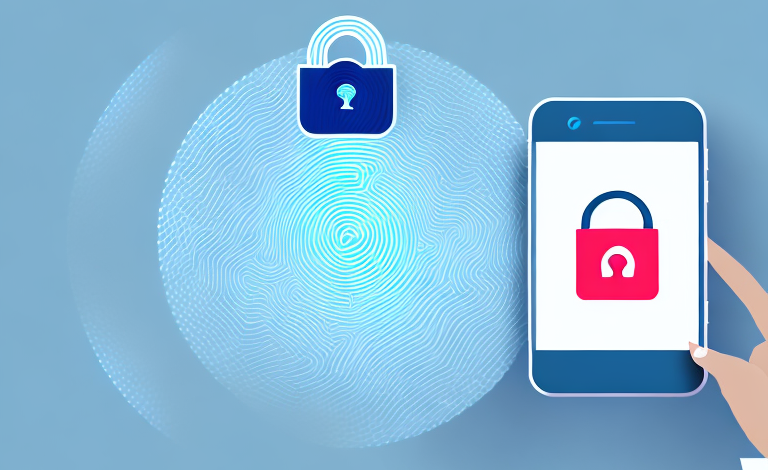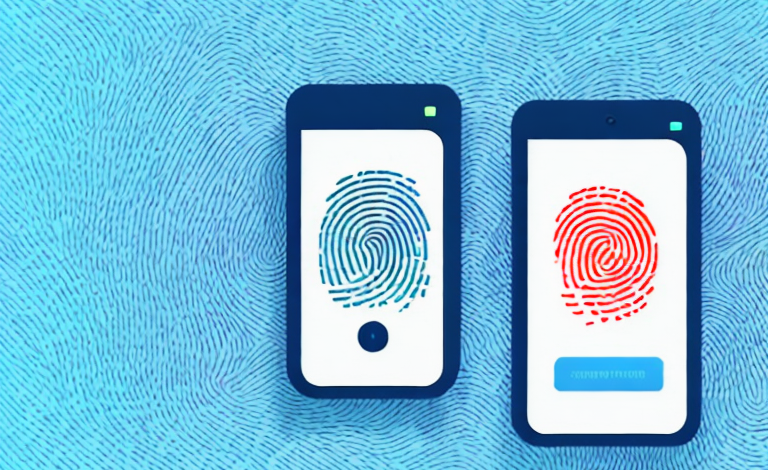Biometric authentication is one of the most advanced forms of security authentication currently available. It is widely used to provide secure access to a wide array of physical and digital devices, including smartphones, laptops, bank accounts, and even automobiles. However, despite the high level of security that biometric authentication systems provide, some people question whether biometric authentication can be fooled.
Understanding the basics of biometric authentication
Biometric authentication is a security mechanism that uses unique biological characteristics, such as a person’s face, fingerprints, and voice, to identify and authenticate an individual. Unlike passwords and PINs, biometric authentication is virtually impossible to replicate or duplicate. This is because biometric data is unique to each individual, making it a highly secure authentication system.
Biometric authentication is becoming increasingly popular in various industries, including banking, healthcare, and government. In banking, biometric authentication is used to verify the identity of customers and prevent fraud. In healthcare, it is used to ensure that only authorized personnel have access to patient records. In government, it is used for border control and to prevent identity theft. Biometric authentication is not only more secure than traditional authentication methods, but it is also more convenient for users, as they do not have to remember passwords or carry physical tokens.
The use of facial recognition technology in biometric authentication
Facial recognition technology is one of the most commonly used forms of biometric authentication. It involves capturing an individual’s facial features and using algorithms to compare them against a pre-existing biometric template. Facial recognition technology is highly effective in identifying and authenticating individuals, making it an excellent tool for improving security in various industries.
However, the use of facial recognition technology in biometric authentication has raised concerns about privacy and potential misuse. Critics argue that the technology can be used for surveillance and tracking, and that there is a risk of data breaches and identity theft. As a result, there have been calls for stricter regulations and guidelines on the use of facial recognition technology in order to protect individuals’ privacy and prevent abuse.
The role of fingerprints in biometric authentication
Fingerprint recognition is another commonly used form of biometric authentication. It involves capturing the unique patterns of an individual’s fingerprints and comparing them against a pre-existing biometric template. Fingerprint recognition is highly secure and accurate, making it a popular choice for many organizations and industries.
One of the advantages of using fingerprints for biometric authentication is that they are difficult to replicate. Unlike passwords or PINs, which can be easily forgotten or shared, fingerprints are unique to each individual and cannot be easily duplicated. This makes fingerprint recognition a highly secure method of authentication.
In addition to its security benefits, fingerprint recognition is also a convenient and user-friendly method of authentication. Users do not need to remember complex passwords or carry around physical tokens, as their fingerprints are always with them. This makes fingerprint recognition a popular choice for mobile devices and other applications where convenience is key.
Can voice recognition be hacked?
Voice recognition technology is also a highly effective form of biometric authentication. It involves capturing an individual’s voice pattern and comparing it against a pre-existing biometric template. Although highly secure, voice recognition technology can be fooled by using recordings or voice synthetics, highlighting a growing concern in this field.
One of the main challenges with voice recognition technology is that it can be affected by external factors such as background noise or changes in the speaker’s voice due to illness or fatigue. This can lead to false negatives, where the system fails to recognize a legitimate user, or false positives, where an imposter is granted access.
Despite these challenges, voice recognition technology continues to be widely used in various industries, including banking, healthcare, and law enforcement. As the technology continues to evolve, it is important for developers to address these concerns and implement robust security measures to prevent hacking attempts.
The limitations of biometric authentication
While highly secure, biometric authentication has some limitations. For instance, biometric data can sometimes be lost, corrupted or altered, thereby compromising the integrity of the security system. Furthermore, some forms of biometric authentication, such as facial recognition, can be affected by poor lighting conditions. Additionally, biometric authentication may not be suitable for all individuals, especially those with physical disabilities or deformities.
Another limitation of biometric authentication is the potential for false positives or false negatives. False positives occur when the system incorrectly identifies someone as an authorized user, while false negatives occur when the system fails to recognize an authorized user. This can be caused by a variety of factors, such as changes in physical appearance or environmental conditions. As a result, it is important to have backup authentication methods in place to ensure the security of sensitive information.
Biometric authentication vs traditional password authentication
Traditionally, most security systems use passwords and PINs as a form of authentication. While these are highly secure, they are also relatively easy to compromise, especially when using common or easily guessed passwords. Biometric authentication, on the other hand, is highly secure and significantly harder to hack, making it an excellent alternative to traditional password authentication.
Biometric authentication uses unique physical characteristics, such as fingerprints, facial recognition, and iris scans, to verify a user’s identity. This makes it much more difficult for hackers to gain access to sensitive information, as they would need to physically obtain the user’s biometric data. Additionally, biometric authentication eliminates the need for users to remember complex passwords, which can be a significant source of frustration and security risk. Overall, biometric authentication offers a more secure and user-friendly alternative to traditional password authentication.
Pros and cons of using biometric authentication for security purposes
Biometric authentication provides a high level of security and convenience, making it an excellent tool for improving security in various industries. However, biometric authentication also has some downsides, such as the high cost of implementation and the potential for biometric data to be compromised. Therefore, it is essential to balance the pros and cons before implementing biometric authentication systems.
One of the main advantages of biometric authentication is that it is difficult to replicate or forge. This is because biometric data, such as fingerprints or facial recognition, is unique to each individual and cannot be easily duplicated. Additionally, biometric authentication can provide a faster and more seamless user experience, as users do not need to remember passwords or carry physical tokens.
Biometric authentication in mobile devices: How secure is it?
Biometric authentication is becoming increasingly popular in mobile devices, such as smartphones and tablets, providing easy access and convenience for users. However, researchers have highlighted numerous risks associated with biometric authentication in mobile devices, such as software vulnerabilities and hacking techniques such as deep fakes.
One of the main concerns with biometric authentication is the potential for false positives and false negatives. False positives occur when the system incorrectly identifies someone as an authorized user, while false negatives occur when the system fails to recognize an authorized user. This can lead to security breaches and unauthorized access to sensitive information.
Another issue with biometric authentication is the lack of standardization across different devices and platforms. This can make it difficult for developers to create secure and reliable biometric authentication systems that work seamlessly across different devices and operating systems.
Common techniques used to bypass biometric authentication
While biometric authentication is highly secure and effective, some criminals may attempt to bypass the system using various techniques. One of the most common methods is using fake biometric data, such as synthetic fingerprints or voice recordings. Other techniques include hacking the software, stealing biometric data, or using advanced hacking technologies such as deep learning algorithms.
Another technique used to bypass biometric authentication is called the “spoofing attack.” This involves creating a fake biometric sample that mimics the characteristics of the real user’s biometric data. For example, a criminal may create a 3D-printed replica of a user’s face or use a high-resolution photograph to fool facial recognition software. Another example is using a gelatin mold to create a fake fingerprint that matches the user’s biometric data.
Enhancing the security of biometric authentication systems with multi-factor authentication
While biometric authentication is highly secure, it is essential to enhance the security of such systems further. One of the most effective ways to do this is by combining biometric authentication with multi-factor authentication, such as requiring additional factors such as passwords or PINs. This helps to reduce the risk of fraud and hacking, making biometric authentication systems even more robust.
Another way to enhance the security of biometric authentication systems is by implementing continuous authentication. This means that the system continuously monitors the user’s behavior and biometric data throughout the session, ensuring that the user remains authenticated. This can help prevent unauthorized access in case the user steps away from the device or if someone else tries to take over the session.
It is also important to ensure that the biometric data is stored securely. This can be achieved by encrypting the data and storing it in a secure location. Additionally, access to the data should be restricted to authorized personnel only. By implementing these measures, the security of biometric authentication systems can be further enhanced, making them even more reliable and trustworthy.
Are there any ethical concerns with using biometric data for authentication?
Biometric authentication raises numerous ethical concerns, such as privacy, consent, and data protection. With growing concerns about the use of personal data, there are fears that biometric data may be used for malicious purposes, such as identity theft. Therefore, it is crucial that adequate safeguards are in place to protect the privacy and security of individuals using biometric authentication applications.
In conclusion, biometric authentication is one of the most advanced forms of security authentication currently available. While highly secure and effective, it is essential to consider the risks and limitations associated with biometric authentication. Adequate safeguards must be in place to protect the privacy and security of individuals using biometric authentication applications.
One of the major ethical concerns with biometric authentication is the potential for discrimination. Biometric data can reveal sensitive information about an individual, such as their race, gender, or health status. This information could be used to discriminate against individuals in areas such as employment, housing, or healthcare. It is important to ensure that biometric authentication is used fairly and without bias, and that individuals are not unfairly targeted or excluded based on their biometric data.



